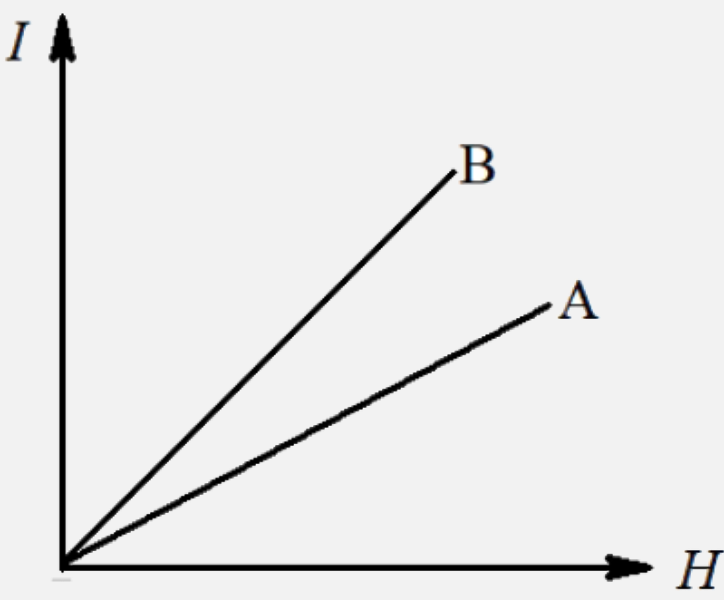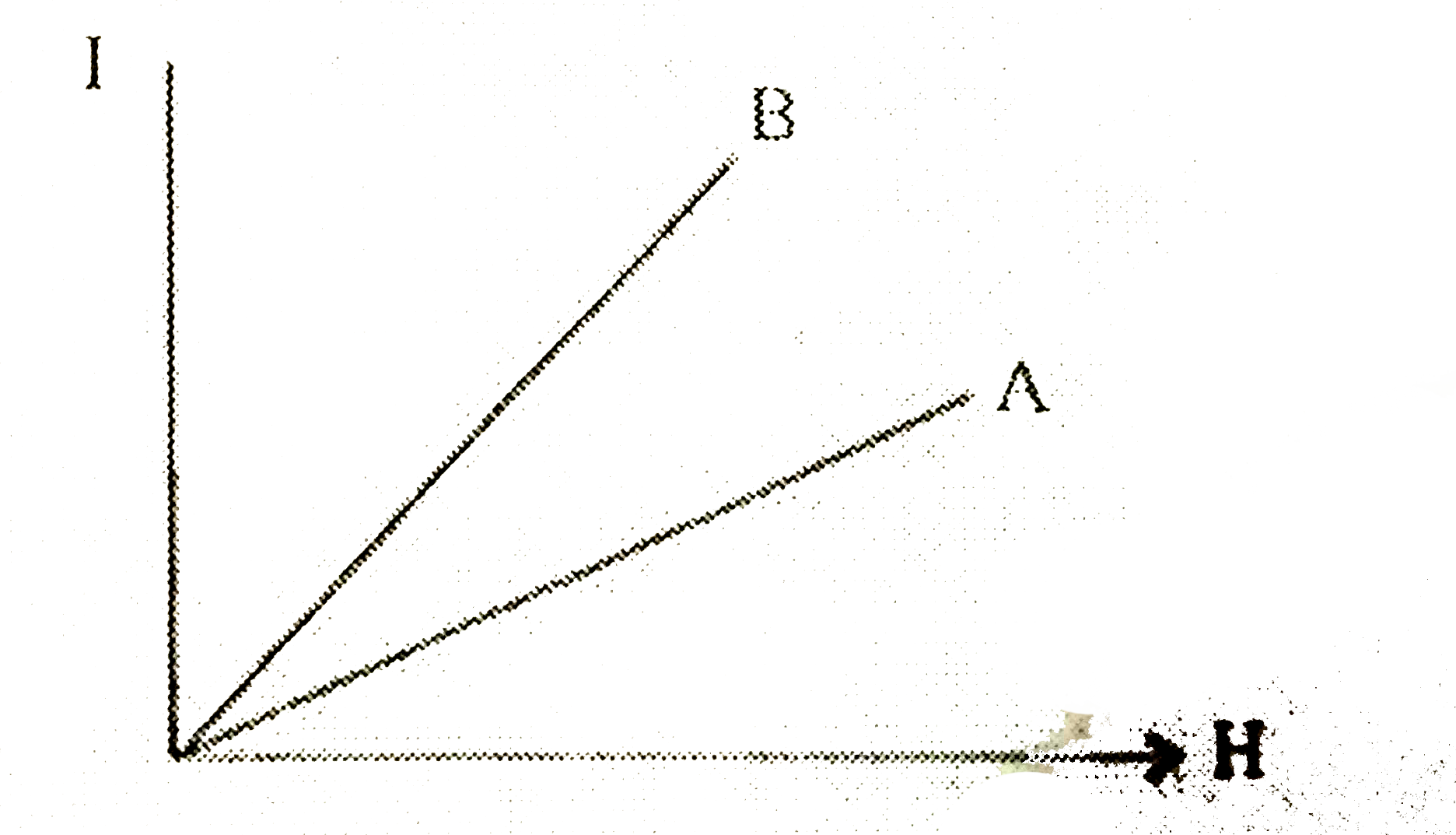Assertion: Suceptibility is defined as the ration of intensity of magnetisation I to magnetic intensituy H.
Reason: Greater the value of susceptibility smaller the value of intensity of magnetisation I.
If both Assertain and Reason are true and Reason is the correct explanation of Assertain
If both Assertain and Reason are true but Reason is not correct explantion of Assertain
If Assertion is true but Reason is false
If Assertion is false but Reason in true.
The correct Answer is:C
To analyze the given statements regarding magnetic susceptibility, we will break down the assertion and reason step by step.
Step 1: Understanding the Assertion
The assertion states that "Susceptibility is defined as the ratio of intensity of magnetization (I) to magnetic intensity (H)."
- Magnetic Susceptibility (χ) is indeed defined as:
χ=IH
where:
- I is the intensity of magnetization.
- H is the magnetic field intensity.
Step 2: Evaluating the Assertion
Since the definition given in the assertion is correct, we conclude:
- Assertion is True.
Step 3: Understanding the Reason
The reason states that "Greater the value of susceptibility, smaller the value of intensity of magnetization (I)."
- This statement implies an inverse relationship between susceptibility and intensity of magnetization, which is incorrect.
- In fact, a greater susceptibility indicates that a material can be magnetized more easily, which means that for a given magnetic field intensity H, the intensity of magnetization I would be greater.
Step 4: Evaluating the Reason
Since the reason contradicts the relationship defined by susceptibility, we conclude:
- Reason is False.
Conclusion
- The assertion is true, and the reason is false. Therefore, the correct option is that the assertion is true, and the reason is false.
Final Answer
- Assertion: True
- Reason: False
The assertion states that "Susceptibility is defined as the ratio of intensity of magnetization (I) to magnetic intensity (H)."
χ=IH
where:
- I is the intensity of magnetization.
- H is the magnetic field intensity.
Since the definition given in the assertion is correct, we conclude:
- Assertion is True.
The reason states that "Greater the value of susceptibility, smaller the value of intensity of magnetization (I)."
- In fact, a greater susceptibility indicates that a material can be magnetized more easily, which means that for a given magnetic field intensity H, the intensity of magnetization I would be greater.
Since the reason contradicts the relationship defined by susceptibility, we conclude:
- Reason is False.
- The assertion is true, and the reason is false. Therefore, the correct option is that the assertion is true, and the reason is false.
- Assertion: True
- Reason: False
Similar Questions
The ratio of magnetisation I to the magnetic field intensity H is
View SolutionThe intensity of magnetisation of a magnetic material is l . Now material is the cut such that volume of the material is halved, then new intensity of magnetization is
View SolutionThe following figure shows the variation of intensity of magnetisation I versus the applied magnetic field intensity H, for two magnetic materials A and B

Which of the material have a larger susceptibility for a given field at constant temperature?
View SolutionAssertion : Magnetic susceptibillity is a pure number.
Reason : The value of magnetic susceptibility for vacuum is one.
View SolutionThe magnetic induction and magnetising field intensity in a sample of magnetic material are B and H respectively . The magnetic susceptibility of the material is
View SolutionConsider a bar magnet having pole strength 2A-m, magnetic length 4cm and area of cros-section 1cm2 Find
(I) the magnetisation I
(II) the magneic intensity H and
(III) the magnetic field at the centre of magnet
View SolutionThe variation of the intensity of magnetisation (l) with respect to the magnetising field (H) in a diamagnetic substance is described by the graph.
View SolutionA magnetising field intensity of 10Am−1 is applied on a sample of paramagnetic material of susceptibility 1999. The net magnetic field inside the material is
View SolutionThe following figure shows the variation of intensity of magnetisation versus the applied magnetic field intensity, H, for two magnetic materials A and B :
(a) Identify the materials A and B.
(b) Why does the material B, have a larger susceptibility than A, for a given field at constant temperature?

View SolutionIf M is magnetic moment developed in the material having volume V,then intensity of magnetisation is given by expession.
View Solution
